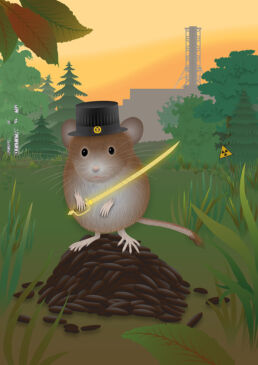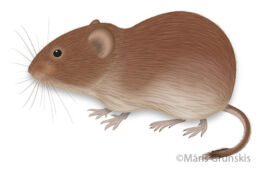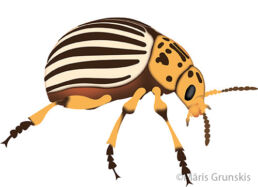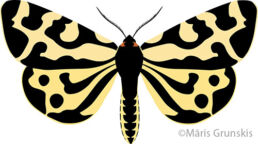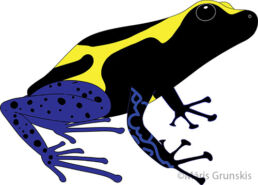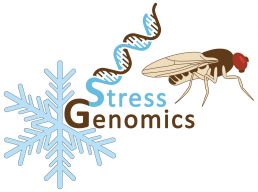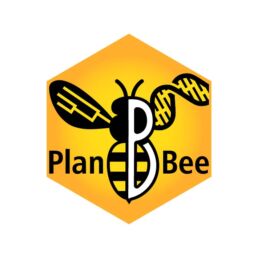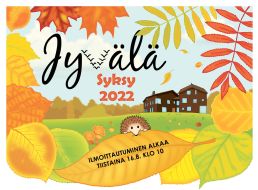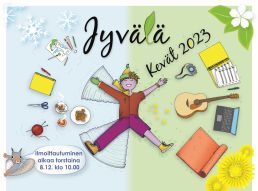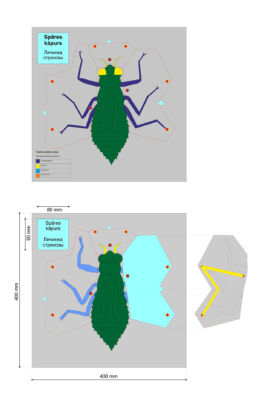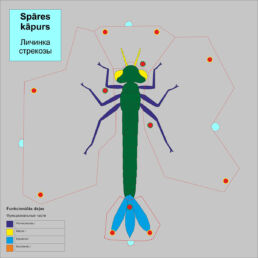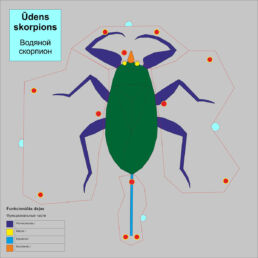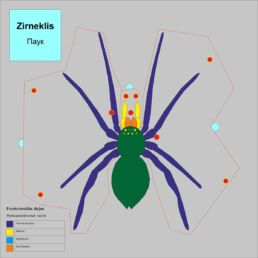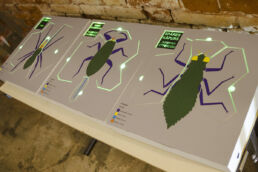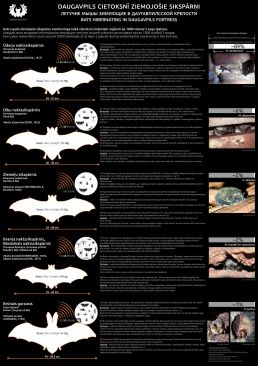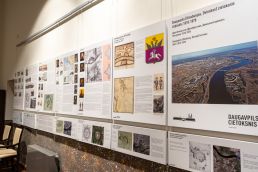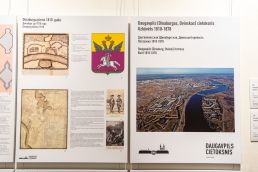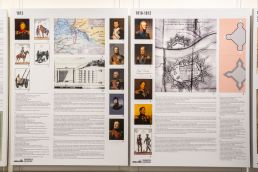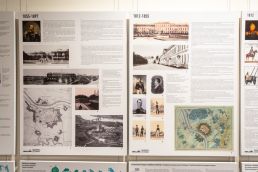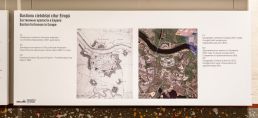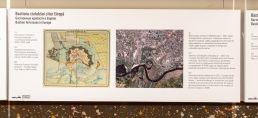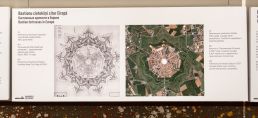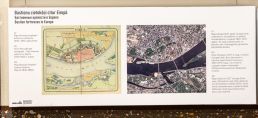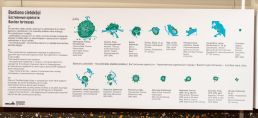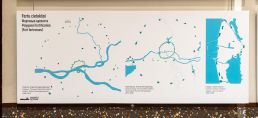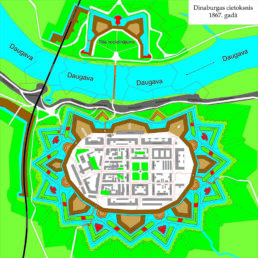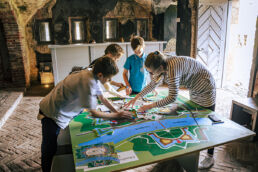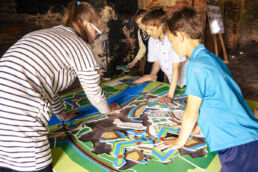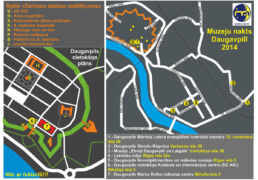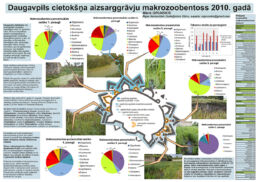Graphic design and illustration services for researchers
Visualize your research!
As a graphic designer with a Master’s in Biology, I enjoy collaborating with researchers to create clear, accurate visuals that enhance presentations, grant proposals, and publications.
I am based in Finland, but I work internationally, so please tell your colleagues that there is a graphic designer excited about visualizing science and science communication!
Feel free to contact me through my email photogrunskis(at)gmail.com.
My graphic design Instagram profile: https://www.instagram.com/maris_grunskis_drawings/
#illustrator #SciComm #GraphicDesign #LogoDesign #designer #InfographicDesign
Present for Karonkka (PhD graduation in Finland)
This happened to be my girlfriend’s PhD defense and Karonkaa, so I depicted us both on a fictional adventure with our dog – a Finnish spitz named Sisu.
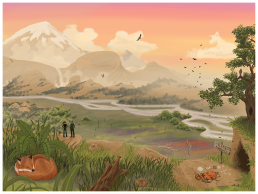
Illustration for a COLDWEBS project
There is a paper with the results of the project and this illustration. The paper is published in the Fish and Fisheries journal:
Kangosjärvi, H., Amundsen, P.-A., Byström, P., Finstad, A. G., Power, M., Sánchez-Hernández, J., & Eloranta, A. P. (2024). Environmental drivers of food webs in charr and trout-dominated cold-water lakes. Fish and Fisheries, 25, 858–875. https://doi.org/10.1111/faf.12851
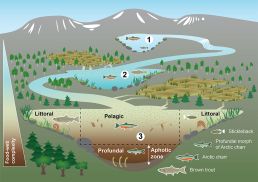
Vector graphic illustration of a bank vole in Chernobyl
My first major graphic design project carried out in Adobe Illustrator in October of 2020. It was made as a Ph.D. graduation gift to a researcher whose main study species was a bank vole in the areas contaminated by radiation. Therefore, the bank vole is portrayed with the Finnish Ph.D. graduation sword and hat. Since one of the main study sites was the Chernobyl exclusion zone – a silhouette of the Chernobyl power plant is in the background. And since his research is on gut microbiome this important detail is present in the composition as well – a pile of vole poop.
Illustration of a bank vole and mutated RNA spaghetti monster in Chernobyl
In 2022 I made an illustration as a graduation gift to another researcher from the same research group. This time the research focused on RNA, so there was a very specific order to create a bank vole fighting off mutated RNA spaghetti monster!
Logo design
Logo for Stress Genomics Research Group at the University of Jyväskylä.
Stress Genomics Research Group studies stress tolerance – how organisms cope with and adapt to stressors at the molecular level and what genomic mechanisms are involved. Their main model species is Drosophila montana – one of the most cold tolerant fly.
So the logo had to represent – Drosophila montana fly, DNA, and a cold/stress and the name ‘StressGenomics’
Logo for a project of Stress Genomics Research Group at the University of Jyväskylä. This project is focusing adaptation of Finnish honeybees to northern environments called ‘PlanBee’
Since researchers will investigate the genetic divergence of honeybee populations, in the logo they wanted to see a representation of a bee, beehive, and DNA as well as bee and honeycomb colors used in the logo – yellows and black.
To create the logo, I combined the silhouette of a bee with the letters ‘P’ and ‘B’ from the name of the project. then I drew the veins of the left wing as a cladogram to stress the divergence and replaced the right wing with a DNA double helix underlying the genetic aspects of the project. The honeycomb creates the edges of the logo and symbolizes the beehive.
Logo for the Evolutionary Genomics Research Group of the University of Jyväskylä
While creating photographic content for the webpage of this research group I also created a logo that would represent the main research objects of the group.
The elements of the logo: DNA, bank vole, tick, microbiome, and natural, urban, and the industrial environment with mention of the Chernobyl exclusion zone represented by the chimney of the nuclear powerplant.
My artwork on Redbubble
My artwork for Jyvälän Setlementti ry
Cover illustrations that I designed for the brochures about autumn and spring-winter courses at Jyvälän Setlementti. My duties included creating and designing many other visual materials for the web and for print, but the seasonal course brochures were the most important works.
Visual aid for tourism attractions in Daugavpils Fortress
Illustrations and designs for Daugavpils Bat Centre (‘Daugavpils sikspārņu centrs’ in Daugavpils, Latvia)
Interactive puzzles of aquatic arthropods
The idea was to help children better understand the different shapes and positions of different functional parts of the invertebrates inhabiting the moats of the Daugavpils Fortress. I had an idea of creating interactive puzzles with electronics that would be more interesting for kids and would help them to better understand the anatomy of insects.
Puzzles were created in cooperation with local IT specialists who programmed and assembled electronics so that puzzles respond with colorful lights to right or wrong pieces. Functional parts of the animals have a specific color to better understand their anatomy. For example, organs used for moving are the same color across all puzzles, as well as organs used for breathing (gills and breathing tube). Each part of the puzzle has a unique shape and unique placement of the sensors, so if the puzzle is assembled correctly it lights up green and you can read the name of the animal, if the puzzle has wrong pieces, it lights up in red.
Visual aid and designs for Culture and Information Centre of Daugavpils Fortress
History of Daugavpils Fortress and comparison with other European fortresses. Designed in 2017.
History of the Fortress with maps, drawings, and historical photographs.
Comparison of different Bastion fortresses among themselves as well as comparison with Polygonal fortification.
The main idea of these additional panels was to put the Daugavpils Fortress into perspective (historical, geographical, and physical – sizewise)
I tried to demonstrate the structure and how some of the fortresses have been preserved well but others have disappeared from the map.
I also researched and drew silhouettes of various bastion (star fort) fortresses of different shapes and sizes and also compared them to the next generation of fortifications – Polygonal fortifications consisting of scattered independent forts. All of these silhouettes are depicted on the same scale, so that viewers can get a sense of the size differences.
Daugavpils Fortress puzzle
In 2016 I designed a map of Daugavpils Fortress in 1867 as a 1,5×1,5m large puzzle for the European Cultural Heritage days in Daugavpils Fortress. We (Daugavpils Municipality Tourism Agency) commissioned Latgales Dizains to produce the puzzle. Each piece is shaped and named the way so it represents a specific defensive structure or building or living block, so you can try to figure out the repeating system of the citadel and learn the names of separate fortifications. It is still possible to try to build it if you visit the guardhouse managed by Culture and Information Centre there.
Map for European Museum Night
A map of the Museum Night’s activities that I designed for Daugavpils city in 2014. All official sites of that year are depicted in the scheme. The fortress is showed separately since it had multiple sites organized by our team of Culture and Information Centre and Mark Rothko Art Centre
Couple of the stamp designs that I created while working in Daugavpils Fortress Culture and Information Centre.
Nicholas Gate stamp and Casemate stamp
Visualization of my own research
Visualization of the composition of macrozoobenthos taxa found in defensive moats of Daugavpils Fortress in 2010. As a hydrobiologist and fan of Daugavpils Fortress, I had an idea to take a look into the composition of species of aquatic invertebrates living in the defensive moats of the Fortress in my hometown. I did not find anything particularly interesting then, but it was the beginning of paying close attention to the life in this human-made, periodically flooding aquatic habitat. And in 2013 it paid off when I found a “living fossil” – tadpole shrimp (Lepidurus apus). There are very few officially known habitats of these archaic crustaceans in Latvia and some other European countries, mainly due to their specific life cycles (they can show up for 4 weeks during spring flood and then disappear for up to 20 years).
